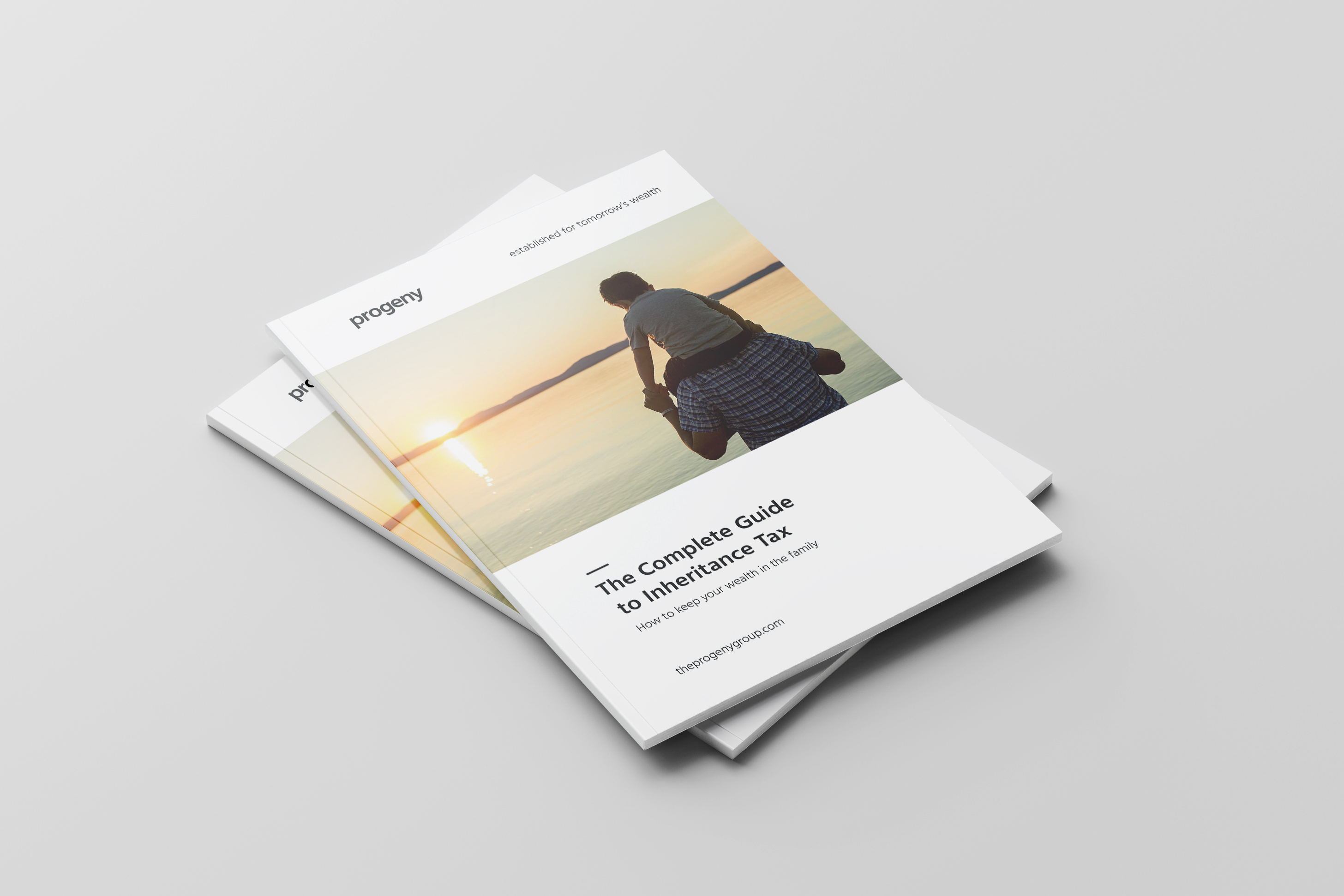
Inheritance Tax. It’s the tax that everyone loves to hate, and often with good reason. Without proper planning, Inheritance Tax can cost your loved ones hundreds of thousands of pounds in the event of your death – not a cheery thought. But with expert advice and careful planning, it’s possible to mitigate it effectively and without a huge burden of effort.
The tax regularly grabs the headlines, capturing the attention of those with even a passing interest in financial affairs. The Inheritance Tax take in 2018/19 was the highest on record, reaching £5.4bn – the eighth consecutive year in which receipts have increased.
For many people, knowing what to do about Inheritance Tax can be challenging. There are many possible mitigation avenues (several of which most people are unaware of) and the legislation surrounding Inheritance Tax can be complex. Our clients tell us that it can be overwhelming. Where should they even start?
For this reason, we’ve created our Complete Guide to Inheritance Tax. We have simplified Inheritance Tax and explained all of the core areas, to help you put the best plan in place to safeguard your family’s wealth for the future.
In this blog post we explore the most basic principles of the four core areas that you need to consider when planning for Inheritance Tax. For much more detail, download our Complete Guide to Inheritance Tax today!
Inheritance Tax is a tax that becomes payable upon death, leading to it often being nicknamed the ‘Death Tax’. If the value of your estate (including all property, possessions, money and, in some cases, your business) is above the Inheritance Tax nil-rate band of £325,000, you will be liable for tax on everything over this threshold at a rate of 40% (or 36% if you leave at least 10% to charity). There is normally no tax to be paid if the value of the estate is below the £325,000 threshold, or if everything is left to a spouse or partner, or if the estate is left to an exempt beneficiary such as a charity.
In April 2017, a new Residence Nil Rate Band (RNRB) – also known as the ‘home allowance’ or ‘main residence allowance’ – was introduced. Read more about this by downloading our full guide!
Methods to Reduce your Inheritance Tax Liability
Financial: Mitigating Inheritance Tax by Gifting
One common option to reduce Inheritance Tax is to gift money outright to other family members or loved ones. This allows you to reduce your Inheritance Tax liability while helping out other generations of the family who are at a different stage in their life and who would benefit from the money. A contribution towards a house purchase or deposit is a common example of this. The gift-giver gets the pleasure of seeing the recipient enjoying the gift while they are still alive, while the recipient gets a welcome foot on the property ladder.
However, donors need to remember that all gifts remain liable for Inheritance Tax for seven years after the date of the gifting. It’s equally important that they have done their own calculations to ensure that they won’t need these funds themselves over the rest of their lives. Our Complete Guide to Inheritance Tax explains more about how we plan for this, as well as explaining the Annual Gift Exemption and offering three more suggestions for how the liability can be reduced from a financial planning perspective.
Legal: Setting up a Trust to Mitigate Inheritance Tax
A trust can enable money to be transferred across family generations while allowing the donor (as a trustee) to retain control over how it is spent. The funds can be retained in the trust until the trustees are happy it is the right time to distribute them.
Everyone is allowed to put a maximum of £325,000 every seven years into a trust, free of Inheritance Tax. A married couple would be able to deposit £650,000 in a trust over the same time frame. As long as the person giving the money away cannot benefit from the trust, it works for Inheritance Tax mitigation purposes and is the most straightforward way of using a trust to reduce the value of your estate.
There are some caveats to using a Trust for these purposes, as well as other options to consider. Download our Complete Guide to Inheritance Tax today to find out more!
Asset Management: Investing in the Alternative Investment Market to Mitigate IHT
The Alternative Investment Market, also known as AIM, is part of the London Stock Exchange. It helps smaller companies to grow by providing them with a more flexible regulatory system than the main FTSE indices. Nearly 1,000 companies from over 100 different countries are traded on the Alternative Investment Market, representing 40 different sectors and boasting a market value of approximately £112 billion.
Many of the companies traded on AIM are eligible for Business Relief, an established form of tax relief that seeks to encourage investments in specific businesses. The shares of the unquoted companies in the AIM market that qualify for this relief will attract 100% relief after two years. This means that shares in Business Relief-qualifying stocks can be left to beneficiaries free from Inheritance Tax, provided that the securities have been held for two years at the time of death.
Unsurprisingly, investment in AIM companies has therefore become a valid and popular option for anyone looking to reduce the impact of IHT on their estate. Find out more about how it works, including Progeny’s solution, by downloading our guide.
Commercial: Business Relief from Inheritance Tax
For business owners, having an awareness of the impact of IHT is vital not just in your personal legal and financial affairs, but in your commercial interests too. In preparing to sell or pass on a business, owners can often focus solely on mitigating the effects of Capital Gains Tax. However, without the right planning, Inheritance Tax can also significantly decrease the wealth that a business owner is able to pass on to his or her family.
Many businesses will qualify for Business Relief from Inheritance Tax on the business owner’s death. This can be up to 100% relief from IHT. However, eligibility depends on what type of business it is and how it is structured. Find out about the requirements and learn more about how business owners can prepare for Inheritance Tax in our full guide.
Our Services
At Progeny, our aim is to equip you with the knowledge and insight required to effectively mitigate the impact of Inheritance Tax on your personal and family life, your succession planning, your investment strategy and your commercial and business interests.
If you would like some help or advice with your Inheritance Tax planning, whether it be for private legal matters or any other aspect of IHT planning, please get in touch. Progeny’s unique structure allows us to provide expert legal and financial advice that delivers holistic solutions to your estate planning challenges, unlike other firms which deal with the issues in silos. We’d love to talk to you about how you can most effectively pass your wealth to the next generations of your family.
In the meantime, download our Complete Guide to Inheritance Tax today to take the first steps towards securing your family’s future!
This article and the guide it links to do not constitute financial or investment advice. Individuals must not rely on this information to make a financial or investment decision. Before making any decision, we recommend you consult your financial planner and/or investment manager to take into account your particular investment objectives, financial situation and individual needs.
Past performance is not a guide to future performance. The value of an investment and the income from it may go down as well as up and investors may not get back the amount originally invested, therefore your capital is always at risk.








